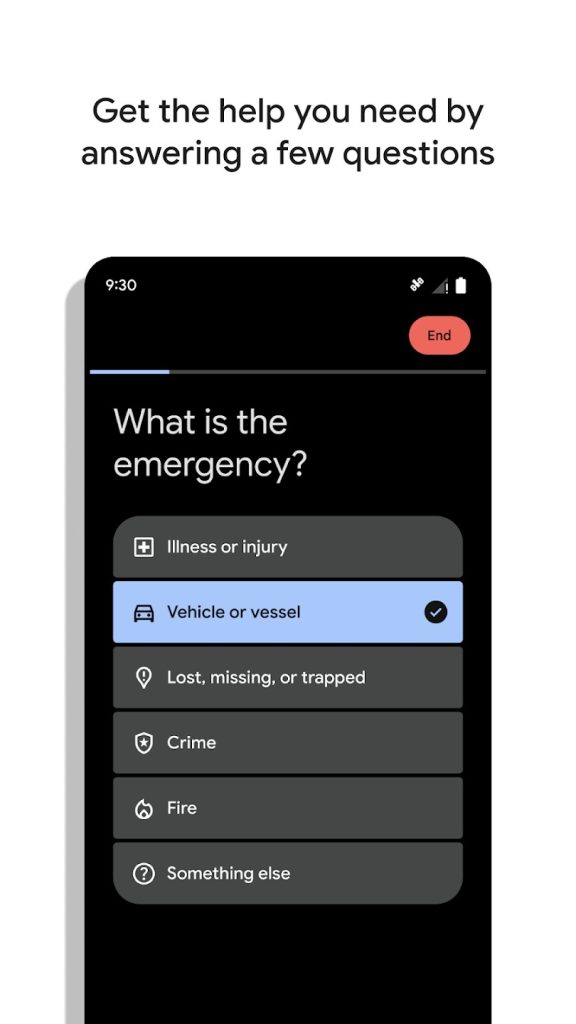
One of the big new features of the Google Pixel 9 series is Satellite SOS, a feature that will be available at launch, but might not work exactly how you think.
When is Satellite SOS launching on Pixel 9?
Satellite SOS is a new feature available to the PIxel 9, 9 Pro, 9 Pro XL, and 9 Pro Fold. It’s thanks to the new Exynos 5400 modem on the Tensor G4 chip which improves support for satellite connectivity (something that the previous Samsung modem technically did support).
There’s been a little bit of confusion going around as to when this feature will be available, in large part because it’s not mentioned in Google’s announcement.
Thankfully, though, we can confirm that it will be available at launch, at least in the US, as we mentioned in our launch coverage of the Pixel 9 Pro.
Google also confirms that Satellite SOS is available at launch on Pixel 9 on a support page, adding that it’s only available in the lower 48 US States, excluding Hawaii and Alaska.
This feature is currently available in the US only (except Hawaii and Alaska). This feature is available on Pixel 9, Pixel 9 Pro, Pixel 9 Pro XL, and Pixel 9 Pro Fold only.
Google has said that Satellite SOS will expand to other countries, but there’s no timeline on when that will happen. Rumor has it the feature could expand back to older Pixels as well, but there’s been no official announcement.
How does Satellite SOS work on Pixel 9?
As for how Satellite SOS actually works, the feature is handled through the dialer app.
If you try to make a call to emergency services but lack both mobile data and Wi-Fi, a chip for Satellite SOS will appear to allow you to begin messaging via satellite. This happens solely through Google’s Dialer app. You can’t access Satellite SOS through Google Messages or the Personal Safety app.
An “emergency questionnaire” will appear and you’ll be able to notify your Emergency Contacts. On-screen prompts will help you correctly position your phone, and Google says and emergency service provider will reply “within a few minutes.” Google Messages is required to be the default messaging app, and service is disabled if you switch to another messaging app.
On an app listing for “Satellite Gateway,” Google shows how this all works.




A demo of Satellite SOS is available through the “Safety & emergency” section of the Settings menu and disables mobile data while the demo is ongoing.
Who powers Satellite SOS?
Google has partnered with Garmin and Skylo to power Satellite SOS on the Pixel 9 series.
Garmin, in a press release, says that it handles “thousands of SOS activations” in the US each year through its Garmin Response service and offers a brief summary of how it handles an emergency situation.
Pixel 9 users who encounter an emergency in the US and are outside of cellular or Wi-fi range may access the Google Satellite SOS feature and connect with Garmin Response, which is staffed 24/7. Professionally trained emergency incident coordinators will gather relevant information and begin coordinating a response using Garmin Response’s vast global network of law enforcement agencies, emergency services providers, search and rescue professionals, embassies, coast guards, and more.
Beyond that, Google is also working with Skylo, a company which provides a satellite network that the Pixel 9 is able to tap into. Skylo explains:
To bring about this complex technical achievement, Skylo has closely worked with both the Pixel and Android teams at Google to create a comprehensive ‘direct-to-device’ satellite connectivity experience. This is an important milestone on Skylo’s journey of making satellite connectivity accessible and affordable to all.
Apple partners with Globostar, another satellite network, to power the iPhone’s Emergency SOS connectivity.
The Pixel 9 series is available to pre-order now.
More on Pixel 9:
- Pixel 9 Pro and Pro XL launch with Satellite SOS, Android 14, $999 starting price
- What Pixel 9 device did you pre-order? [Poll]
- You can get over $1,000 off of Pixel 9 Pro XL with these Samsung and iPhone trades
Follow Ben: Twitter/X, Threads, Bluesky, and Instagram
FTC: We use income earning auto affiliate links. More.


Comments